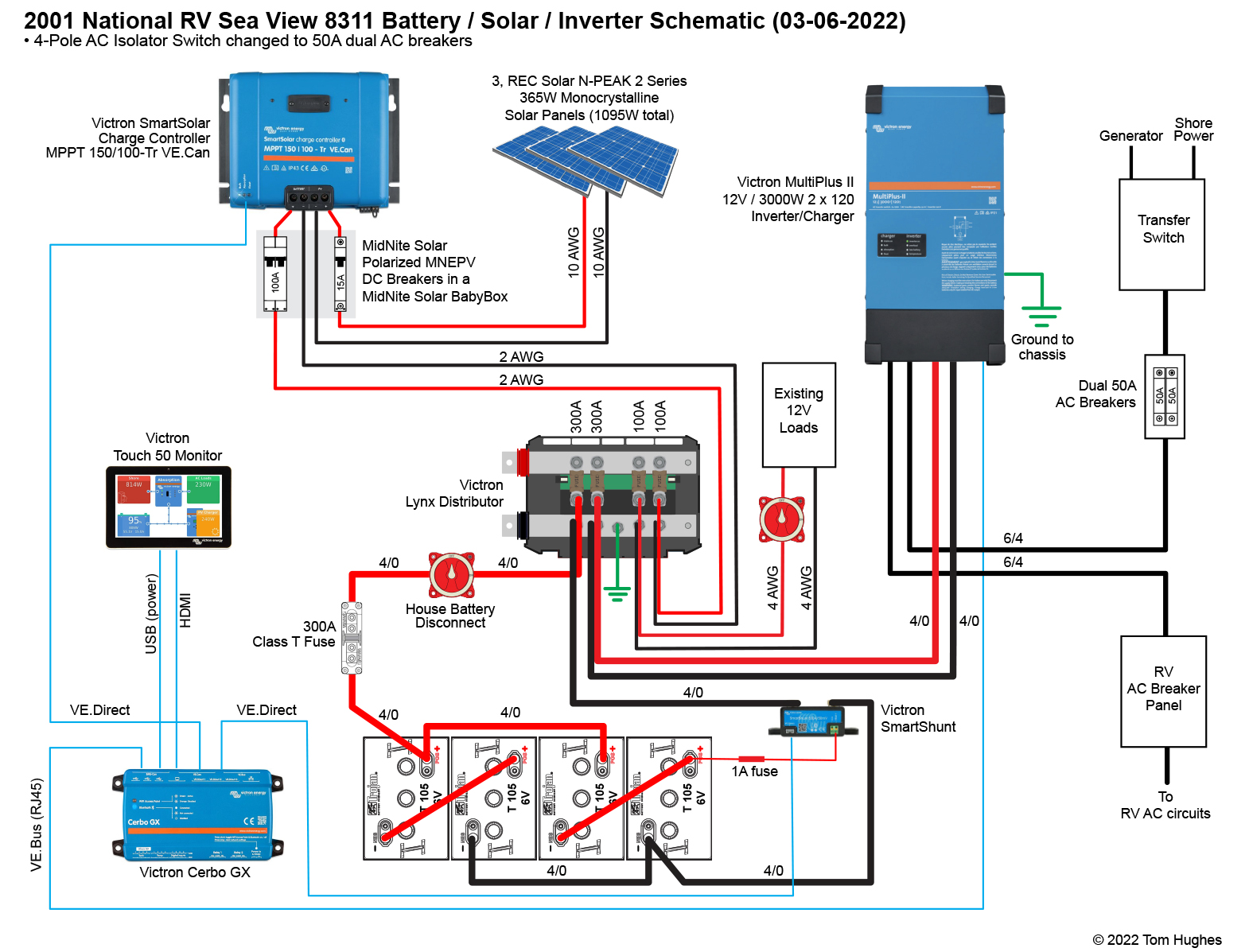Greetings,
First Post Here so Hello Ya'all!!!
In addition to the "Victron MultiPlus Inverter/Charger 12V 3000w 120a 120v BNIB" what other components/ accessories will I need?
I have a 2021 Forest River Vibe and it is considered to be a "30 Amp 12 VDC" travel trailer and I am installing a new LifePo4 battery system in it "from scratch" and I wanted to get advice from the Borg Collective in the Cyber RV Campground.
I say "from scratch" because the existing converter/ battery charger has been removed from the WFCO 8955 panel and the previous lead acid battery and associated wiring has been discarded so the only electrical components remaining in the trailer are the following:
-OEM WFCO 8955 panel (minus the converter)
-Battery disconnect switch
-Microwave
-Dual source fridge
-13000 BTU air-conditioned (single unit)
-DC energized/ propane fueled furnace
-40 inch LCD AC powered television
-Furrion 12 VDC radio
-Single brand new LifePo4 200 AH battery
-Of course the usual AC wiring and outlets and DC powered LED interior lighting
-There is currently no solar panels however that might be an option in the future.
The goal is to boondock almost exclusively with very minimal use of AC powered components (microwave popcorn and occasional use of a power pack for a notebook computer or (not at the same time) watch a movie on the 40 inch AC powered television. We will have a small generator available for the rare times that we will use the single air-conditioner system.
So if I buy the "Victron MultiPlus Inverter/Charger 12V 3000w 120a 120v BNIB" what other accessory will I need?
THANKS All and I am grateful for any help/ advice/ well wishes/ moments of silence/ shoulda-Woulda-Couldas you can provide!!!
First Post Here so Hello Ya'all!!!
In addition to the "Victron MultiPlus Inverter/Charger 12V 3000w 120a 120v BNIB" what other components/ accessories will I need?
I have a 2021 Forest River Vibe and it is considered to be a "30 Amp 12 VDC" travel trailer and I am installing a new LifePo4 battery system in it "from scratch" and I wanted to get advice from the Borg Collective in the Cyber RV Campground.
I say "from scratch" because the existing converter/ battery charger has been removed from the WFCO 8955 panel and the previous lead acid battery and associated wiring has been discarded so the only electrical components remaining in the trailer are the following:
-OEM WFCO 8955 panel (minus the converter)
-Battery disconnect switch
-Microwave
-Dual source fridge
-13000 BTU air-conditioned (single unit)
-DC energized/ propane fueled furnace
-40 inch LCD AC powered television
-Furrion 12 VDC radio
-Single brand new LifePo4 200 AH battery
-Of course the usual AC wiring and outlets and DC powered LED interior lighting
-There is currently no solar panels however that might be an option in the future.
The goal is to boondock almost exclusively with very minimal use of AC powered components (microwave popcorn and occasional use of a power pack for a notebook computer or (not at the same time) watch a movie on the 40 inch AC powered television. We will have a small generator available for the rare times that we will use the single air-conditioner system.
So if I buy the "Victron MultiPlus Inverter/Charger 12V 3000w 120a 120v BNIB" what other accessory will I need?
THANKS All and I am grateful for any help/ advice/ well wishes/ moments of silence/ shoulda-Woulda-Couldas you can provide!!!

